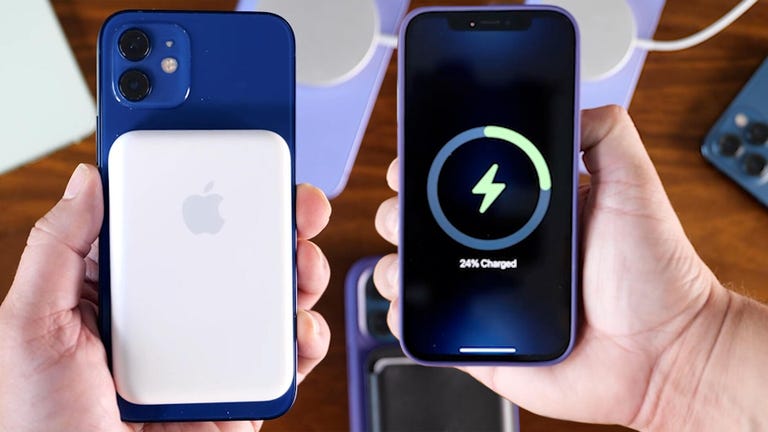Modern travel sees great benefits from the tech tools in our pockets. Anyone can download a few smartphone apps (many of them free) to reserve hotel rooms, navigate cities, translate signs through the camera, and, with the latest AI-driven apps, even translate conversations in real time.
But those fancy phone features require a data connection, which typically costs extra through roaming charges when you’re outside your home network. Here’s how to avoid such charges.
Read more: Best Phone to buy for 2024
First and foremost, you’ll want to understand how pricey those extra charges are, or whether you’ll be traveling to a region that’s cheaper or free with your carrier. Some mobile carriers have partnered with carriers in other countries for more-affordable roaming or even free service, albeit with some restrictions. For instance, some plans, like T-Mobile’s Essentials, have free service in Canada and Mexico, though only at slow “2G” and “3G”-like speeds, so don’t expect to stream lots of video with that connection.
But traveling to most countries will require you to pay mobile roaming charges if you try to use data services, make voice calls, or send text messages on your phone as normal. If that’s your plan, check out our guide for the best travel phone plans.
If you want to avoid mobile roaming charges, keep the following tips in mind.

Set up mobile service ahead of time
Some carriers will let you pick traveling service options ahead of time, which can include daily, weekly or monthly flat fees to get service from partner carriers in other countries. You can wait until you arrive at your destination and wait to be prompted to select your chosen service, but you can set it up ahead of time. Note that some carriers will simply default you to these services rather than charge you higher roaming fees, though it’s worth confirming before you travel.
These international plans are pretty convenient, though some may come with caveats like being deprioritized behind other carrier customers, meaning you’ll get lower speeds during peak traffic times. Check the fine print of each travel plan to know its restrictions and what you may need to pay for extra service.
Verizon’s international plans start pretty simple, with $10 a day getting you 2GB per day of high-speed data and unlimited 3G-speeds data thereafter, as well as free voice calls and texting, in over 210 countries. That plan is discounted to $5 per day in Canada and Mexico.
If you have one of the carrier’s latest plans, known as Unlimited Plus and Unlimited Welcome, you’ll get these features included for Canada and Mexico. Folks with Verizon’s top Unlimited Ultimate option will get this international data for Canada and Mexico as well as for more than 210 countries.

Watch this: Here’s Why Your Phone Battery Still Sucks
AT&T has a similar $10-per-day travel plan for unlimited data, voice calls and text. The data counts against your usual plan’s allowance; going over will result in a charge and/or reduced download speeds of a super slow 2G-like connection. If you don’t sign up for this plan, traditional roaming fees kick in, charging per text message, megabyte of data and minute of voice calling.
Unlimited data for Canada and Mexico is included in AT&T’s main Unlimited plans, while the carrier’s Unlimited Premium PL and Unlimited Elite plans also allow unlimited data in 20 Latin American countries.
T-Mobile has its own international plans with unlimited calling, though they’re pretty modest with data, starting at $5 per day for half a gigabyte of downloaded data. But keep in mind that the carrier’s standard plans also include some international data allowances.
The basic Magenta and Go5G plans offer up to 10GB of high-speed data a month in Canada and Mexico, and once that’s used up, get unlimited data at very slow 2G speeds (as previously mentioned, the cheapest Essentials plan only gets data in Canada and Mexico at 2G speeds). Go5G Next, Go5G Plus and Magenta Max plans have a small 5GB monthly travel allowance for high-speed data in over 215 countries, though that’s subject to potential extra taxes and conditions. Standard Go5G plans get the same 5GB data allowance in 11 European countries.
Though it’s possible to bump up your plan for the month (or more) you’re traveling and return to your old plan thereafter, it’s likely simpler to just pay for international data.

Getting mobile service directly from a local carrier
Before carriers got friendlier with their international agreements to support each other’s customers, one of the better traveling strategies was to get service straight from the carrier in the country you were traveling in. Once you landed, you’d just walk into a local carrier’s retail store and get a prepaid SIM card to last you the length of your trip.
That’s still possible today, though it’s a bit more complicated. If you have one of the many phones that lack a physical SIM slot, including the latest iPhone 15 series and Samsung Galaxy S24 series, you’ll have to register service through one of the eSIM accounts on your device. It’s pretty easy to do, and is in fact one of the benefits of having multiple digital eSIM slots — so you can have one for domestic use and one for traveling — but it requires you to register through the carrier in question. You can even load the eSIM before you travel, through apps like Airalo and Ubigi.
Unfortunately, there’s something else to consider: whether your phone is unlocked, that is, not tied to a carrier and restricted in using eSIMs from other carriers (even international ones). If you bought your device unlocked, you’re in the clear.
If you’re paying off your phone in installments from your carrier, it’s complicated. Verizon users have it best, as their installment plans unlock phones after 60 days. AT&T and T-Mobile, however, require you to finish your installments and fully pay off your phone to unlock it. Since AT&T’s plans have a minimum of 36 monthly installments, customers may be out of luck getting a local carrier eSIM unless they’re nearing the end of their contract — in which case it may make sense to pay the balance for more travel freedom.
Relying on a hotspot and tethering
Another method to avoid roaming is a bit more roundabout and requires you to sign up for service with a local carrier anyway, but you won’t have to fiddle with eSIMs. When you land in your country of travel, you can rent a mobile hotspot (or register service on one you already own), which is a handheld device that turns cell signals into Wi-Fi.
Note that you’ll still need to pay for service either from the hotspot maker or from a local carrier, and there’s no guarantee that their networks will play nicely with a given hotspot device. Check that it’ll work in the area you’re traveling to.
Once you’ve got one set up, you just connect to the hotspot’s Wi-Fi using your phone as normal. While it’s a bit more cumbersome, this also lets you get internet for your other devices, like tablets and laptops, pretty much anywhere you get a phone signal from a local carrier.
Read more: Best cheap phone plan for 2024
Another caveat is that you’ll need to keep the hotspot itself charged, which is another device battery you’ll have to worry about. It might be worth carrying an external battery to make sure your hotspot can last a full day while you’re out and about.
Ultimately, whatever option you choose should fit your travel habits and where you intend to go. Some carrier partnership options will be more appealing but offer slower speeds than getting service straight from the local carrier. But don’t worry about getting locked into a choice: You can always try out one way when you arrive and switch to another if a better choice presents itself.




















+ There are no comments
Add yours